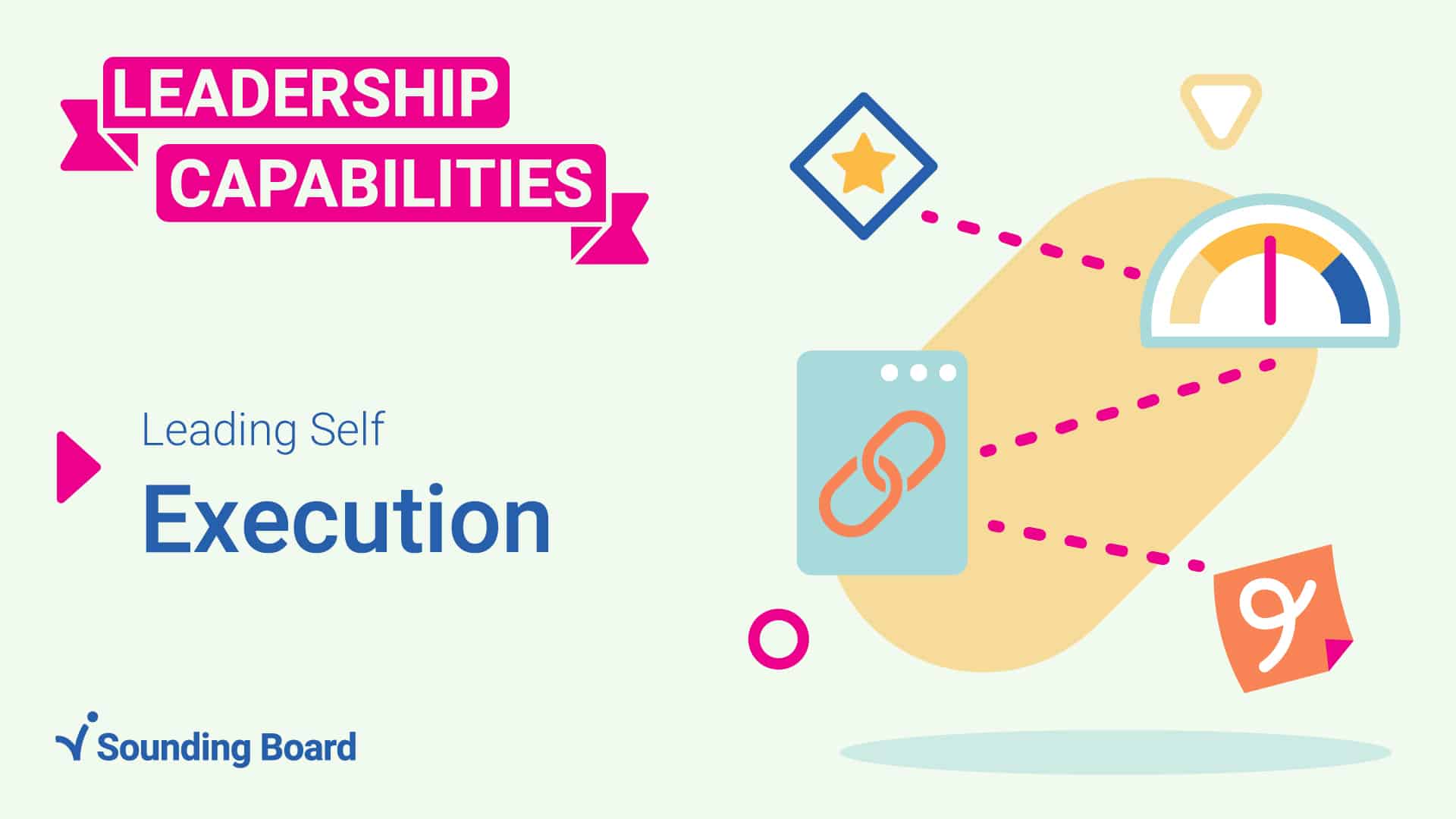This blog is part of a 16-part series focused on what capabilities make a strong leader. Sounding Board has identified 16 leadership capabilities that the strongest leaders possess. These were developed from research-backed leadership theories, leadership competencies used for evaluation from top business schools, and 25+ years of practical coaching application.
Regardless of their personal leadership style, there are several capabilities leaders must employ to be successful in their organizations. Some common leadership skills – such as communication or problem-solving – can only be leveraged appropriately if they’re paired with the ability to execute.
To execute effectively, leaders should be able to:
- Stimulate others to decide and to act
- Align resources and people with key objectives.
- Carry out decisions and plans
- Measure and monitor progress and performance
- Hold people accountable for plans, performance, and progress.
In other words, leading by execution means that leaders can hold themselves and others accountable for making plans and decisions and sticking to them. They must be able to execute decisions within the team framework.
Why execution is a crucial leadership capability
The ability to execute is one of the most important capabilities a leader can possess. The reason is simple: without execution, a leader never sees success for their efforts, or in their business. Further, their teams’ development will also reflect this lack of follow through and progress.
Even with excellent vision-setting skills, leaders won’t realize results unless they can execute to their advantage. Their ability to stimulate positive action in their team members, and hold them accountable for the actions they need to take is crucial to build a team and execute a plan that moves the business forward.
How to execute effectively in your team
Execution may sound easy, but it can be challenging to know where to start when you want to implement this capability into your business practice. Consider following a few simple steps to implement execution leadership. They are:
1. Create detailed plans
Develop a practical, step-by-step plan that you can implement with your team. Assign team members specific tasks to accomplish and goals to meet so that they can follow your plan too.
Start your plan by defining the objectives you need to meet to complete a specific task. For example, if you’re trying to plan a promotional event, think of the objectives needed to get it done: scheduling workers, sending emails, designing flyers, etc. Then, ask specific people to use their expertise and skills to meet those objectives.
2. Create realistic and ambitious goals
Your team will perform better if they know exactly what goal they need to work towards. Give them deadlines that are reasonable but still ambitious – deadlines that they will have to work to meet. Hold them accountable to move closer to that goal with each work day, and if they start to fall behind, take steps to find out why, and learn how you can help.
Set weekly, monthly, and yearly goals for your team. It can help to have both a long-term vision and a short-term plan to move slowly towards that final destination.
3. Provide lots of feedback
Positive feedback is a powerful motivator for people with a wide variety of work styles. Positive feedback encourages people to continue working hard and improving. Leaders should provide as much feedback as possible, and encourage team members to offer positive feedback to one another to build a culture of support and encouragement.
Of course, there may be a place for negative feedback too. Part of holding your team accountable to their goals and using your execution leadership skill is letting them know when they’re falling behind. However, always keep negative feedback mixed with positive to increase your employee’s satisfaction and encourage their constant improvement.
4. Resolve conflict
As a leader, it is your job to resolve conflict and encourage collaboration in the workplace. It may occasionally be difficult to help team members see eye to eye, but it’s crucial that you do your best to help them get along. Encourage open communication and equal opportunities across the board.
5. Develop and share resources
If your team is working hard to meet a goal, they’ll need the proper resources to do so. You’ll help them save a lot of time and energy if you can provide them with the resources they need instead of making them look for help on their own. Once you’ve set a plan with a few goals for each team member, make sure each of them has the necessary tools and assets needed to meet that goal as quickly and efficiently as possible.
Start now
Execution is all about putting into practice what’s needed to accomplish your goals as a leader. With leadership coaching, this is a skill that can be built and enhanced throughout a leader’s career.
Not sure where to start? The team at Sounding Board has you covered. Our network of world-class certified coaches can offer personalized leadership development solutions to help your business thrive. For more information, reach out to our team. We will help you understand the value of our specialized coaches for your organization, and help you get started today.









